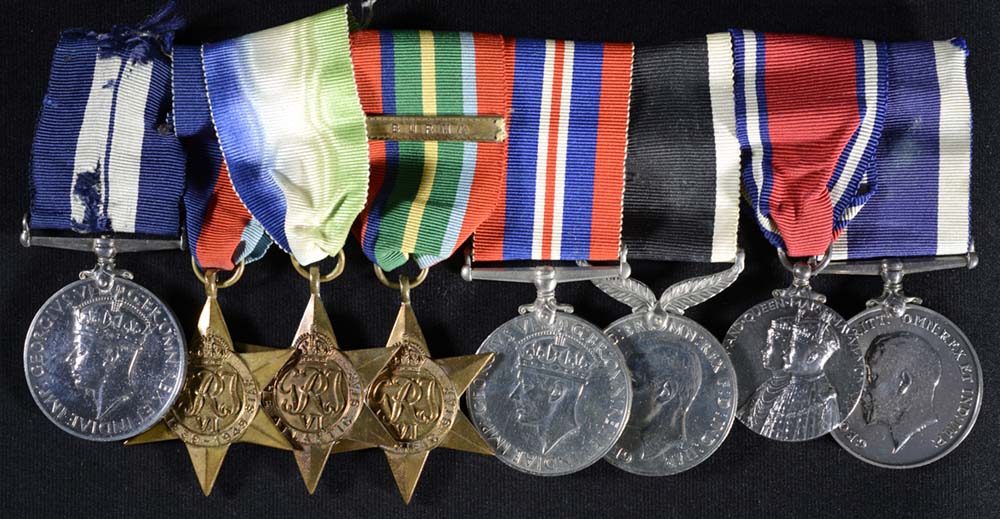

Display No. 8I
WAIN, William Job
William Wain joined the New Zealand Division of the Royal Navy in 1922. After completing his training in HMS Philomel, Wain was posted to the cruiser HMS Chatham. In 1924 he was sent to the United Kingdom where he was posted to the battleship HMS Revenge in the Atlantic Fleet. Wain undertook further training in HMS Fisgard in 1925, and was promoted to Acting Leading Stoker. He spent several months attached to the battleship HMS Ramillies in the Atlantic Fleet, before joining the crew of HMS Diomede, which had recently been allocated to the New Zealand Division. Wain remained with Diomede until the ship was taken back to the United Kingdom for refit at the end of 1929. He then spent almost a year training at British shore establishments, before returning with Diomede to New Zealand in October 1930. He remained with Diomede for a further six years. Wain was present during the rescue efforts after the Hawke’s Bay earthquake in 1931. In 1935 Diomede began its journey home to Britain to be paid off into the reserve. Diomede was diverted to Aden for possible actions against the Italian forces during the Abyssinian crisis. Diomede eventually returned to Britain and was paid off in March 1936, Wain being part of the ship’s company which was transferred to HMS Achilles to bring it out to New Zealand.
At the outbreak of the Second World War, Wain was still on board Achilles when the ship was called to patrol the Pacific and Atlantic Coasts of South America for German vessels. Achilles was subsequently involved in the Battle of the River Plate on 13 December, 1939. Wain was awarded a Distinguished Service Medal (DSM) for his actions in the battle. His citation stated, ‘he was an inspiration and help to them all. He steamed the boiler room with the highest efficiency, using great initiative in setting and adjusting the sprayers to obtain the best flame and a minimum of smoke’. Wain remained with HMNZS Achilles until 1943 and was on board when the ship was bombed off Guadalcanal. He was part of the crew that took Achilles to Britain for refit and modernisation. Wain then joined the commissioning company of HMNZS Gambia and served in the European theatre and then in the Indian Ocean. He returned to New Zealand in January 1945 and took his discharge in September 1945.
Awarded medal(s)
Medal Description [Left to Right]:
The Distinguished Service Medal (DSM)
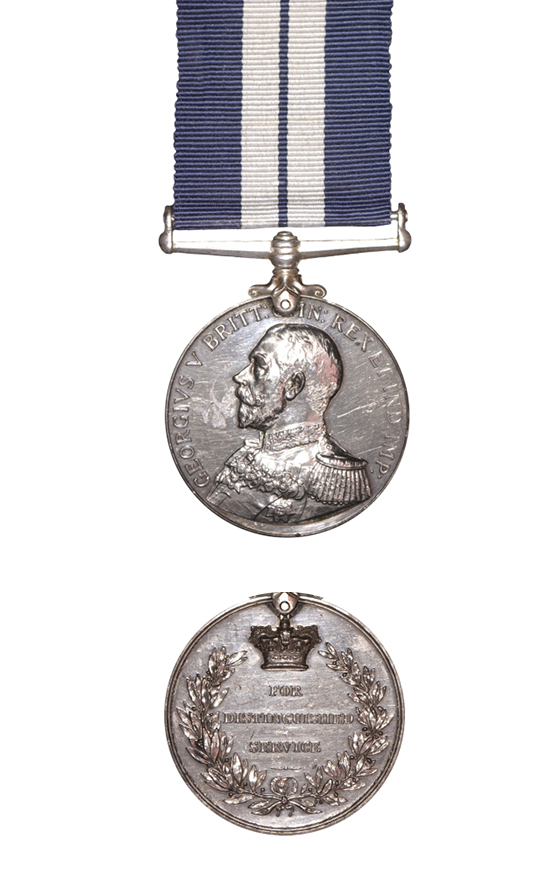
The Distinguished Service Medal (DSM) was instituted in 1914 for senior and junior ratings of the Navy. It was awarded for acts of bravery in the face of the enemy for which the award of the Conspicuous Gallantry Medal was not considered appropriate. It was replaced in 1999 by the New Zealand Gallantry Decoration. The ribbon has three equal stripes: dark blue, white and dark blue with a thin dark blue stripe down the centre of the white stripe.
The 1939-1945 Star
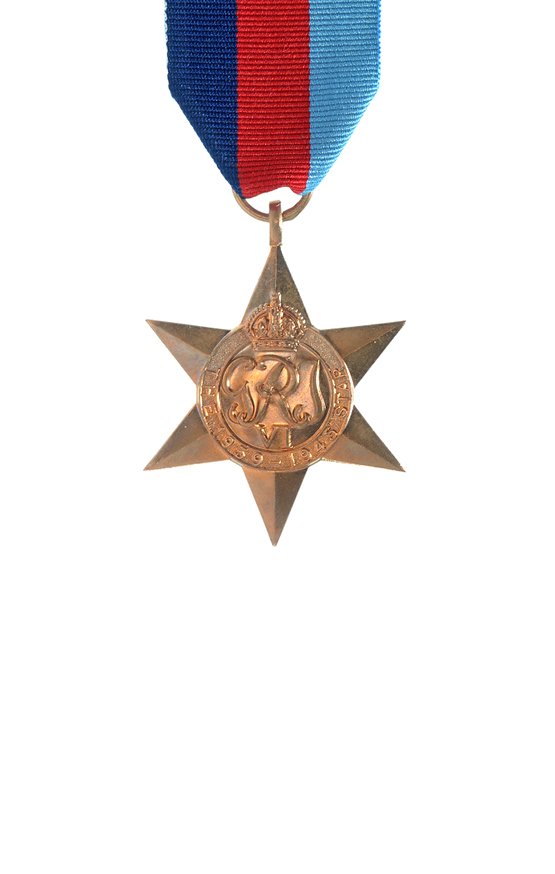
The 1939-45 Star is the first in a series of eight campaign stars instituted in 1945 to recognise service in World War Two. The ribbon has three equal vertical stripes of dark blue, red and light blue. The dark blue stripe symbolises the service of the Navy and the Merchant Navy, the red stripe symbolises the service of the Army, and the light blue stripe symbolises the service of the Air Force. The equal width bands represent the equal contributions of the three service arms towards victory. The ribbon was devised by King George VI. Two clasps could be awarded with this medal: ‘Battle of Britain’ and ‘Bomber Command’. Only aircrew would qualify for these clasps although a small number of Fleet Air Arm naval pilots flew for the air force and would be eligible for the ‘Battle of Britain’ clasp.
The Atlantic Star
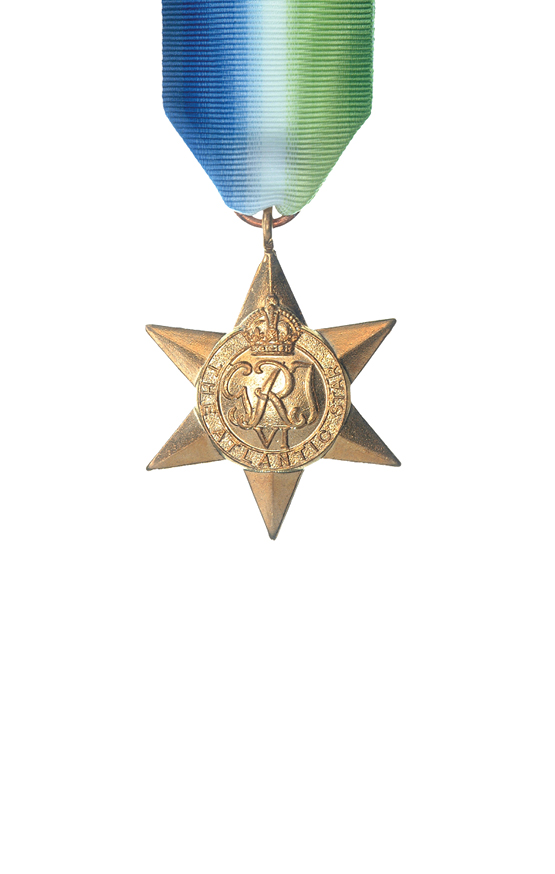
The Atlantic Star was awarded for service during the Second World War. It was instituted to commemorate the Battle of the Atlantic the longest continuous military campaign in the Second World War running from 3 September, 1939 – 8 May, 1945. Six months naval service or four months air service in the Atlantic, United Kingdom (‘home’) waters or North Russian waters was normally required. The ribbon is watered silk coloured blue, white and green, symbolising service in the oceans. Two clasps could be awarded with this medal: ‘France and Germany’ and ‘Air Crew Europe’. Personnel issued the Atlantic Star who then qualified for either the France and Germany and the Air Crew Europe Stars were awarded a clasp in respect of the second only (as only one clasp could be worn on the star).
The Pacific Star
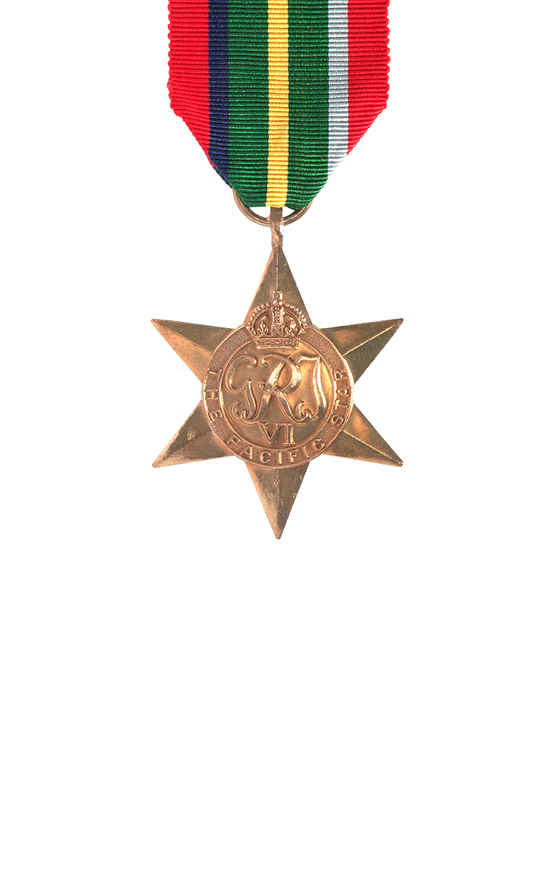
The Pacific Star was awarded in the Second World War for operational service in the Pacific between 8 December 1941 and 2 September 1945. This medal was also awarded for certain specified service in China, Hong Kong, Malaya and Sumatra: between 8 December 1941 and 25 December 1941 (for Hong Kong); between 8 December 1941 and 15 February 1942 (for China and Malaya); and between 8 December 1941 and 23 March 1942 (for Sumatra). The centre of the ribbon is dark green (symbolising the jungle) with a central yellow stripe (symbolising the beaches). On the outer edges are wide stripes of red (representing the Army), with narrow stripes of dark blue and light blue (representing the Navy and Air Force) between the stripes of dark green and red. A ‘Burma’ clasp could be awarded with this medal. Personnel qualifying for both the Pacific and Burma Stars were awarded the first star but only a clasp in respect of the second.
The War Medal 1939-1945
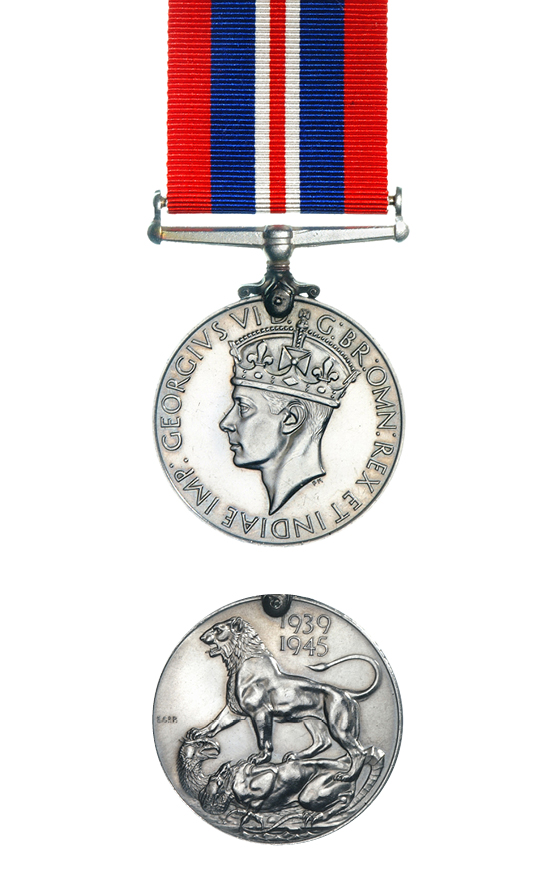
The War Medal 1939-45 was awarded across the British Commonwealth to all full-time members of the Armed Forces in the Second World War for 28 days service between 3 September 1939 and 2 September 1945, irrespective of where they were serving. The ribbon is the red, white, and blue of the (British) Union Flag. There is a narrow central red stripe with a narrow white stripe on either side. There are broad red stripes at either edge, the two intervening stripes being blue.
A bronze oak leaf on the medal ribbon denotes that the recipient was Mentioned in Despatches. To be Mentioned in Despatches a member of the armed forces had their name mentioned in an official report, written by a superior officer, and sent to a higher command. The report would describe the individual’s gallant or meritorious action in the face of the enemy.
The New Zealand War Service Medal
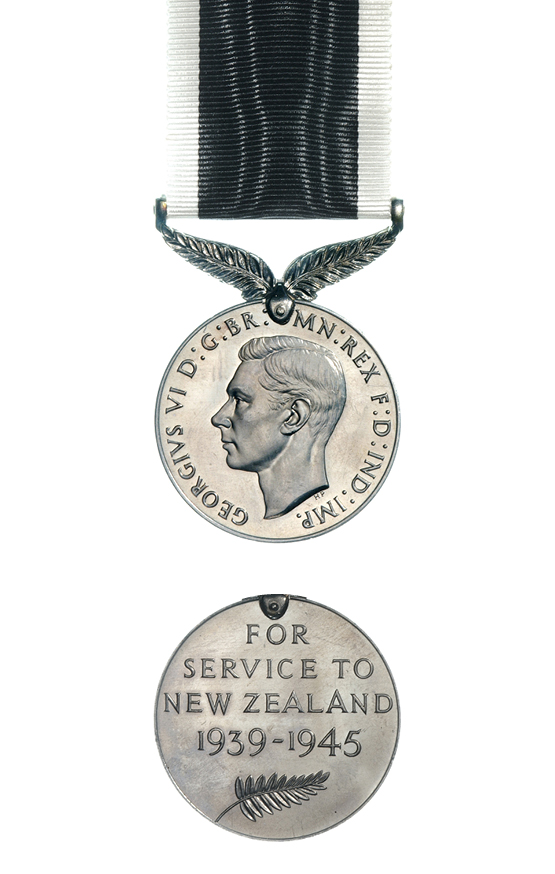
The New Zealand War Service Medal was awarded for 28 days’ full time service or six months’ part time service in the Second World War in any of the New Zealand Armed Forces including the Reserves, Naval Auxiliary Patrol Service, or Home Guard, between 3 September 1939 and 2 September 1945.
Jubilee Medal 1935
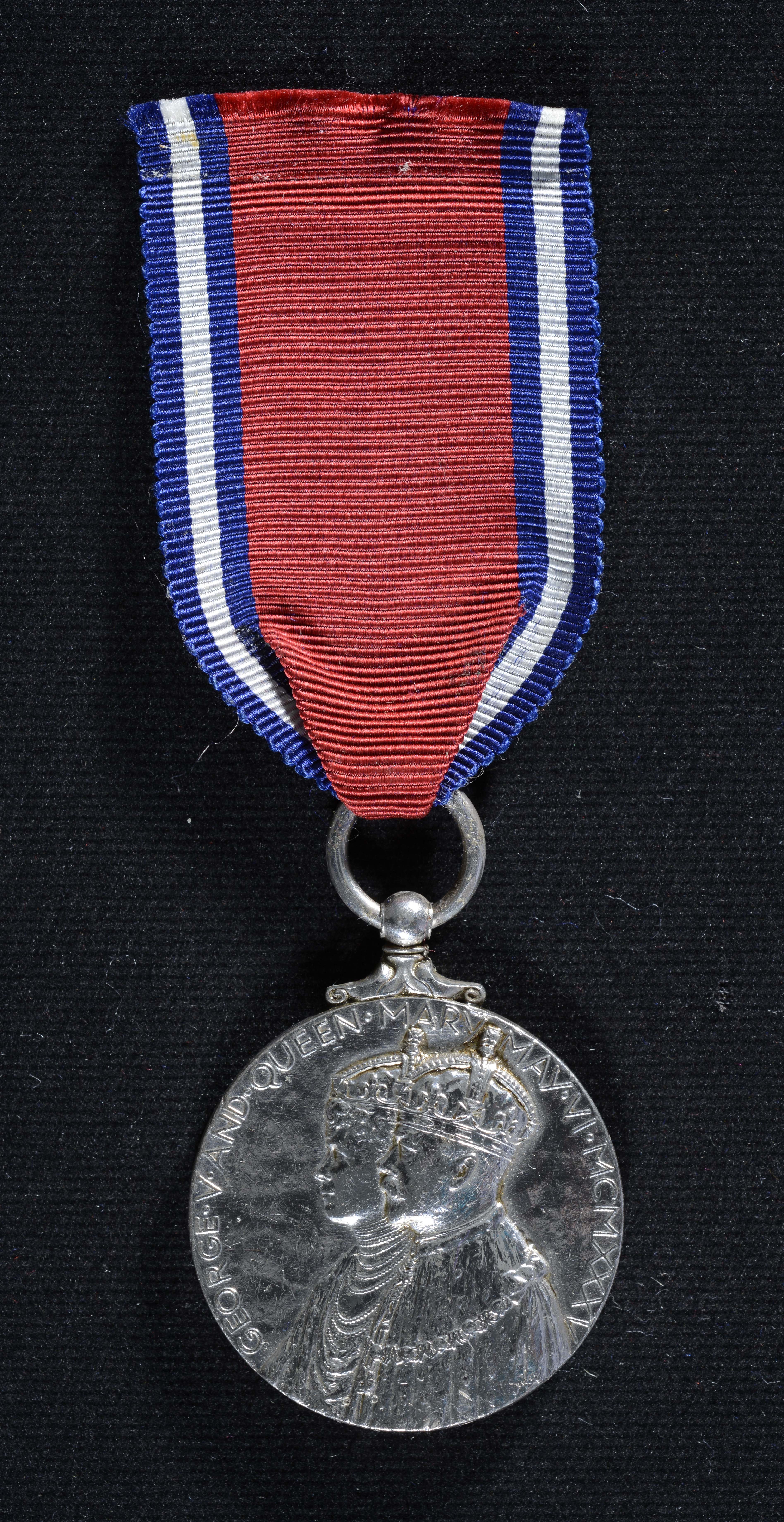
A commemorative medal instituted to celebrate the 25th anniversary of the accession of King George V.
Royal Naval Long Service and Good Conduct Medal
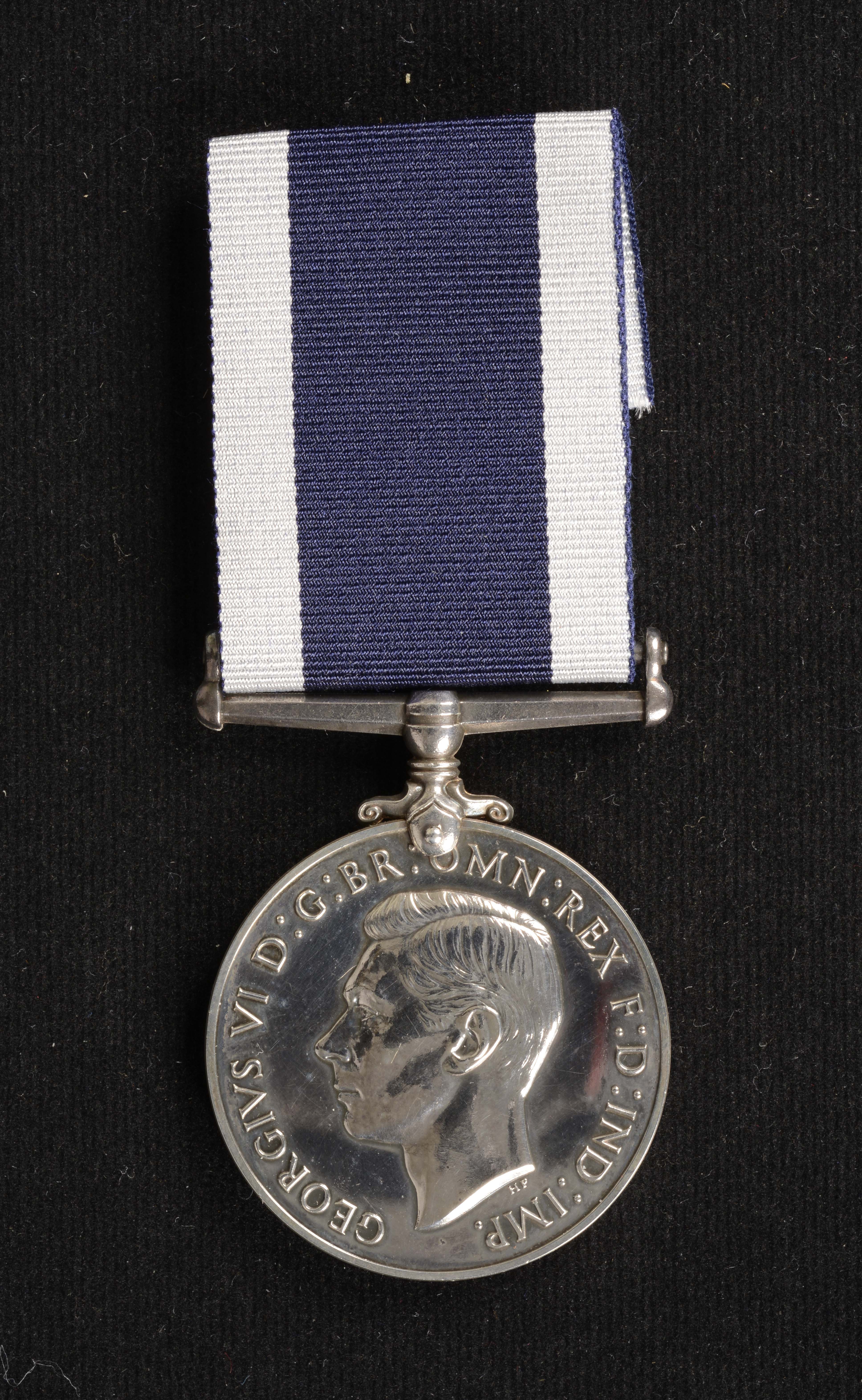
Awarded to ratings who have served a minimum of 15 years in the Royal Navy (previously 21 or 10 years), the first version of this medal was instituted in 1831 and it is still issued to Royal Navy personnel today. It features the reigning monarch’s head on the obverse and HMS Victory on the reverse with the recipient’s details engraved or impressed on the edge of the medal. This medal was also issued to eligible personnel serving in the New Zealand Division of the Royal Navy from 1921-1941 and then to Royal New Zealand Navy personnel from 1941-1981. In 1985 a New Zealand Royal Navy Long Service and Good Conduct Medal was introduced bearing the exact same design.

